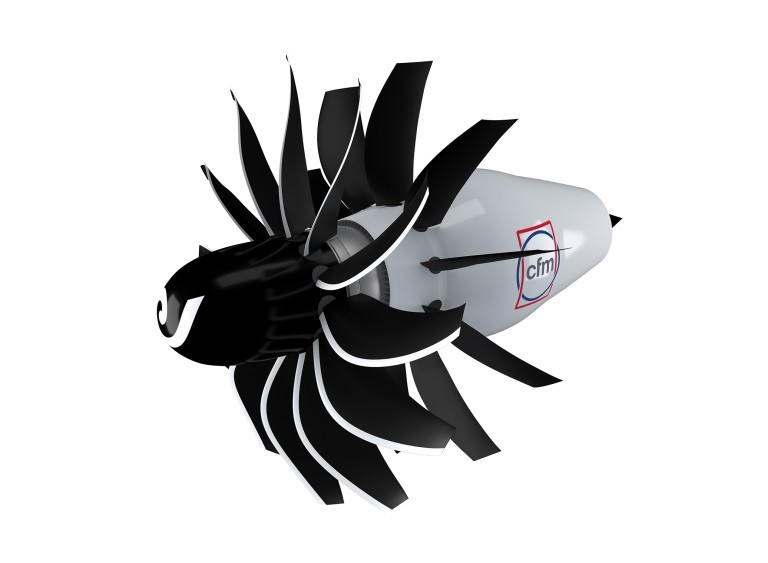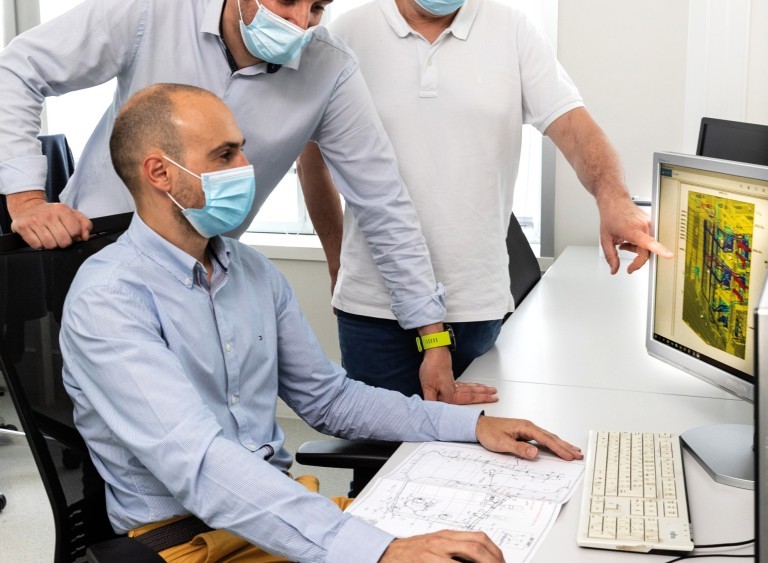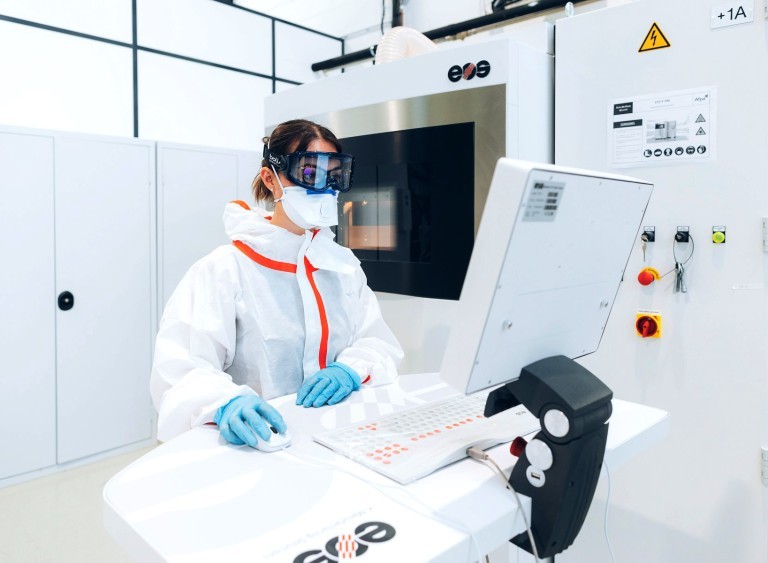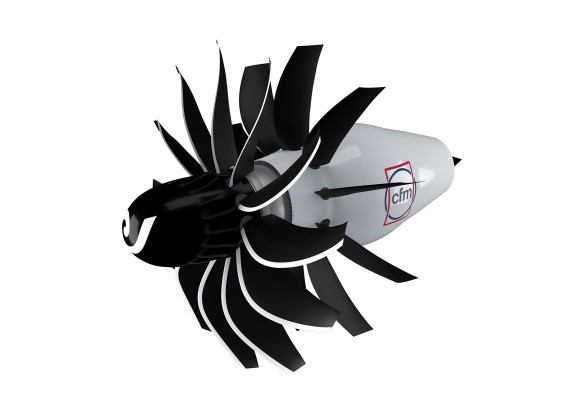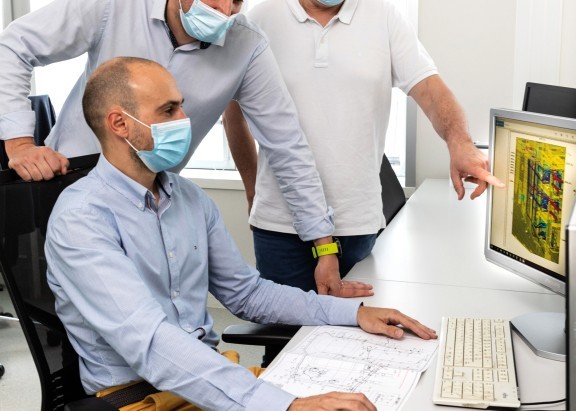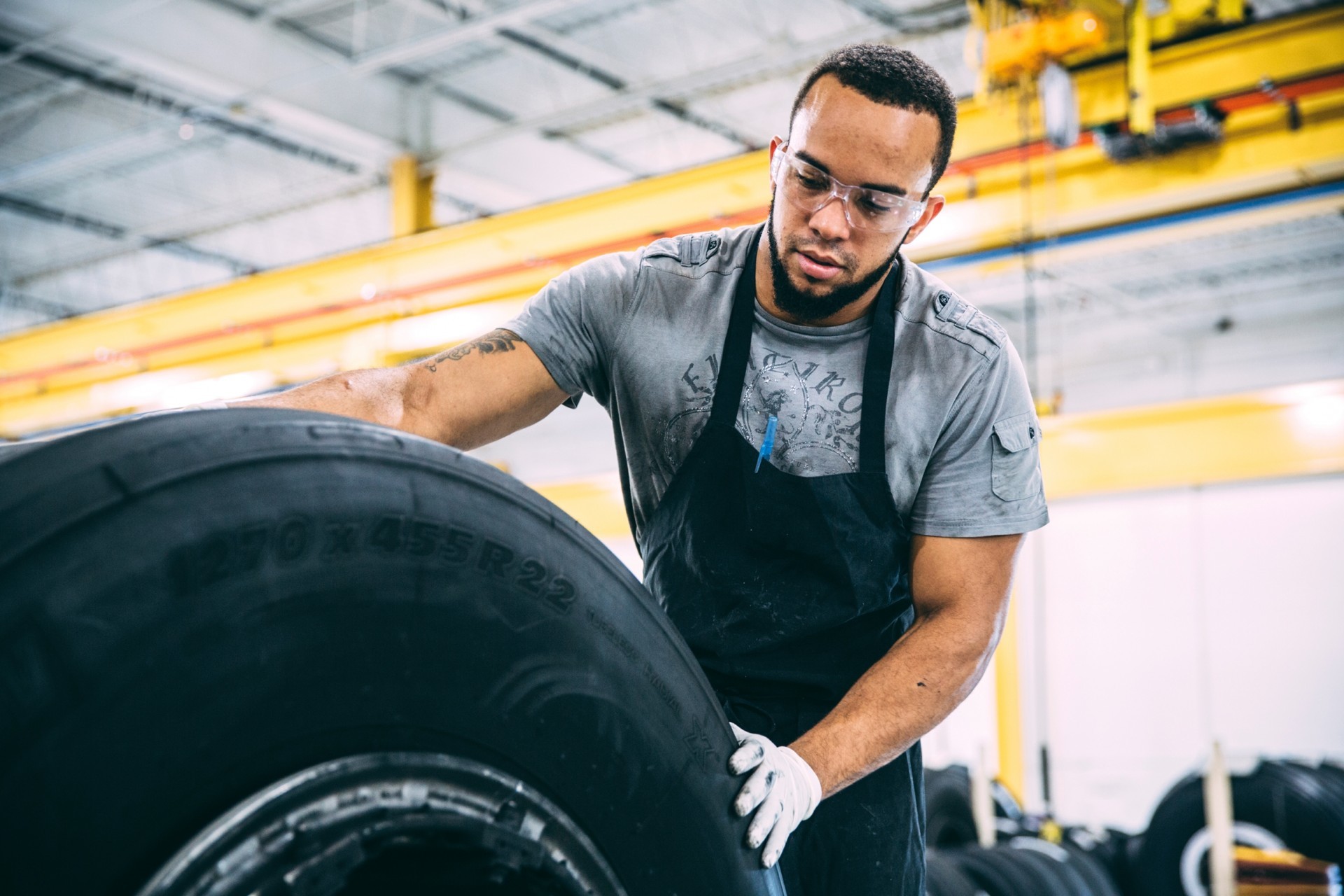
MRO: focus on a flagship business
Maintenance, repair and overhaul (MRO) is crucial to the business models of Safran companies and must help drive the post-Covid recovery and prepare their longer-term future. We look at the key challenges ahead.
- At a glance
- Digitalization
- Did you know?
RO is a vitally important activity for all Safran companies. It provides key information about the in-service performance of the Group’s products, while generating a substantial revenue stream and playing a critical role in customer relations.
IN-HOUSE KNOW-HOW
The importance of MRO to Safran’s business activities can be measured in both economic and industrial terms. At Safran Landing Systems, for example, 1,400 people work in MRO, which accounted for 14% of revenues and 12% of profit in 2019. Its landing gear MRO services are delivered locally through a network spanning the globe. “We operate as closely as possible to our customers,” says Bruno Chiarelli, Executive Vice President of the MRO division at Safran Landing Systems. “We have facilities in Mexico and Florida, serving North and South America, two major European sites in Molsheim and Dinard, France, another in Gloucester, United Kingdom, a legacy MRO station in Singapore and a newly created joint venture with China Eastern Airlines in Xi’an, which covers Asia. These facilities form a multifaceted network serving all aircraft families and all continents. Due to the complexity of our products, we deploy all the necessary resources, skills and expertise in-house, so we make almost no use of outside providers.”
Learn more about Safran Landing Systems' MRO activities
Watch the video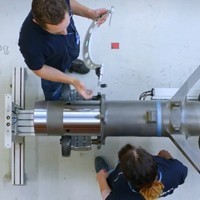
We’re expecting a gradual recovery in the second half of 2021, which will of course depend on how the crisis plays out in the region
POST-COVID CHALLENGES
Safran Landing Systems’ MRO activities, based on preventive maintenance at scheduled intervals, irrespective of circumstances, have enabled the company to better weather the Covid crisis. But for most other Safran companies, workloads were impacted in 2020 and early 2021 by the slowdown in air travel. At Safran Electronics & Defense’s workshop in Singapore, created in 2010 through a partnership with Singapore Airlines’ engineering division and specializing in the maintenance of avionics equipment, business fell by 40% last year.
“We’re expecting a gradual recovery in the second half of 2021, which will of course depend on how the crisis plays out in the region,” says Matthieu Péré, MRO General Manager for Safran Electronics & Defense Singapore. “While anticipating higher volumes after the crisis, enabling it to grow its market share, the Singapore station is preparing for future projects, such as insourcing of the repair of new products on the Airbus A350 and Boeing 787 and 777X. The workshop, with its strong culture of innovation and continuous improvement, is focusing on areas such as automation and blockchain technology, in line with Safran’s digitalization roadmap. The last key development challenge for the longer term is access to and use of flight data, especially with our Cassiopée services, in accordance with the development of Services 4.0 at Group level. Safran Electronics & Defense has set the standard within the Group for aircraft data management, and especially in Singapore we intend to become a leading center of excellence in this area for the Asia-Pacific.”
China, a dynamic market
Safran is strengthening its presence in the Chinese MRO market through partnerships with local players — a prerequisite for entry. Safran Landing Systems, for example, has become the first OEM in its segment with a maintenance capability in China, through a joint venture with China Eastern Airlines. Safran Aircraft Engines is now present in CFM56/LEAP maintenance through its partnership with Air China in SSAMC, based in Chengdu. And in 2022, Safran Nacelles will open its first China-based maintenance shop in Suzhou, on the Safran industrial campus.
LEAP RAMP-UP
Beyond its direct impact on business volumes, the health crisis has led to higher customer expectations: we need to do more, faster and cheaper, while extending the service life of our products. In an increasingly competitive environment, cost and industrial performance are becoming key success factors. This is the case for Safran Aircraft Engines, which handles shop visits for flagship products like the CFM56 and LEAP. With the LEAP, “we’re at the start of the engine’s service life with Quick Turn operations, designed to fix teething issues and minor faults through on-wing or shop interventions,” says Pierre Guillaume, Vice President, Commercial Engines MRO. “But we’re already structured to capture a significant share of the market for future LEAP shop visits and component repairs, while meeting the challenge of cost control. Digitalization is at the heart of a range of projects to optimize our MRO operations and deliver the best and most appropriate type of service. For example, we only remove and overhaul engines when necessary. More broadly, we’re organizing to keep pace with a significant increase in production volumes. This involves raising the efficiency of our existing workshops and investing in new industrial capacity for the long haul. The challenge of hiring and training new people is equally important, even though this is a business anchored in employee passion and knowledge transfer.”
- 9,500
Safran employees working in MRO at more than 70 facilities or dedicated repair lines.
- 60.9%
Proportion of Safran’s propulsion revenues generated by services (including MRO).
- 50
Average turnaround time (TAT) in hours for a landing gear overhaul at Safran Landing Systems.
TOWARDS A “ONE MRO” APPROACH
hile each Safran company manages its own operations and customers, they face many of the same challenges, especially in the post-Covid world. The first is to harmonize processes, standards and methods across the Group’s MRO divisions — a dynamic that began with the One Safran initiative and the creation of job field committees in Services and MRO. “The main post-Covid objective is to drive productivity gains and achieve maximum customer satisfaction. We also want to offer service packages that are more clearly recognizable from one company to another and that convey the ‘Safran Touch’,” says Olivier Savin, Vice President, Digital Transformation, Sales, Support & Services for Safran. “To do this, we need to accelerate the digitalization of our MRO businesses. It’s a key initiative that involves modernizing the basic building blocks of the information systems supporting our operational processes. It also calls for a whole host of innovative new digital solutions, inspired by the world of industry and delivering tangible benefits for our MRO operations. These include automation of diagnostics and greater use of virtual and augmented reality, cobots and robots, as well as more seamless digital continuity. Not to mention smarter use of data to streamline processes, improve operational performance and increase customer satisfaction and differentiation in an extremely competitive marketplace.”
There’s plenty to keep us busy on the MRO front!
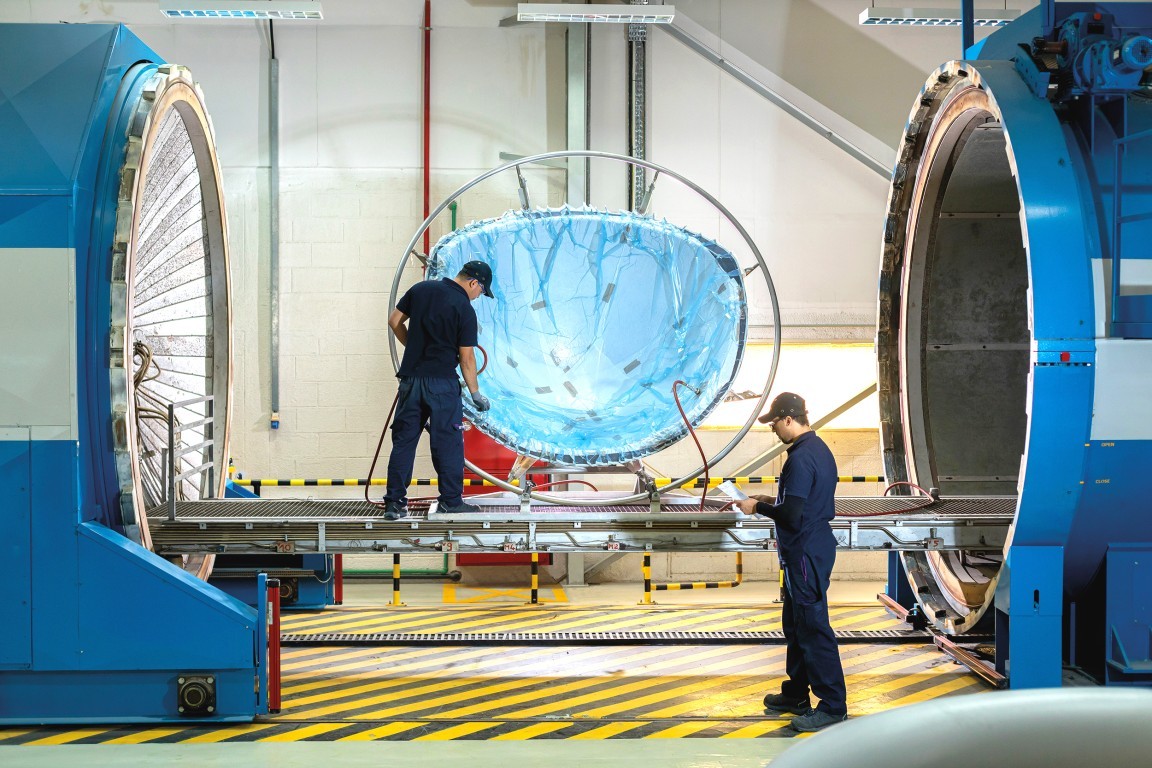
Curing a repaired composite radome in an autoclave at Aerostructures Middle East Services (AMES), the joint venture between Safran Nacelles and Air France Industries KLM Engineering & Maintenance.
More information on the AVIC joint venture
Read more

Safran Electrical & Power is expanding its service offering with ePower Life — a brand that brings together all its repair, spare part and service expertise for wiring harnesses, generators, distribution equipment and electric motors.

The competitiveness of Safran companies in MRO markets also depends on value propositions that meet customer expectations. Safran Landing Systems, for example, is launching Landing Life, which groups a number of previously separate solutions. The result is greater clarity for customers and the possibility of choosing a service package tailored to their exact needs.

